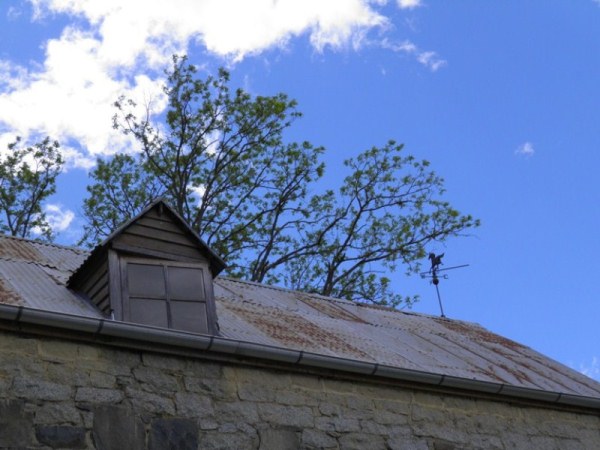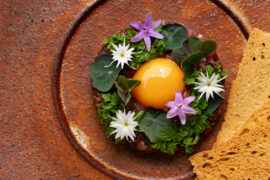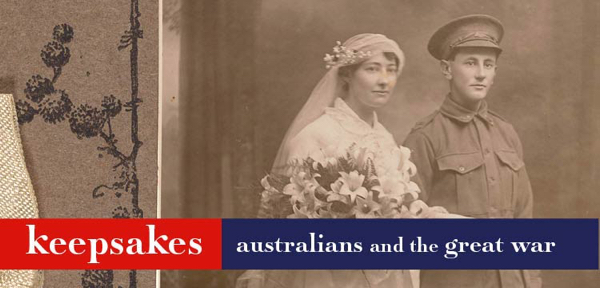
“Walk all around the place and let it talk to you,” urges historian Lenore Coltheart as she welcomes guests to Ballalaba, the property near Braidwood where she lives with Canberra chef Janet Jeffs.
Their charming weatherboard cottage looks out over the Great Dividing Range and a bucolic rural landscape that looks particularly splendid since the winter rains that broke more than a decade of drought.
 The property resonates with history, not least because of its 180-year-old stone barn, built by convicts in the 1830s. The fact that this impressive barn with its gabled roof is still standing, relatively intact and still a working building, tells a remarkable story about the early years of European settlement in Australia.
The property resonates with history, not least because of its 180-year-old stone barn, built by convicts in the 1830s. The fact that this impressive barn with its gabled roof is still standing, relatively intact and still a working building, tells a remarkable story about the early years of European settlement in Australia.
Coltheart has unearthed all sorts of fascinating information about Ballalaba, including the fact that the racehorse Archer, winner of the first two Melbourne Cups in 1861 and 1862, was bred and raised here.
It was also, at one time, home of the notorious Clarke Brothers, bushrangers who roamed the district and were eventually hanged for their crimes.
But today we’ve come to talk about food, and to sample “a taste of convict life at Ballalaba”. Janet Jeffs has researched what the convicts might have eaten in those early years, and we are experiencing her interpretation of the fare that fuelled the convict labour force.
Jeffs is the director of Ginger Catering, which runs The Ginger Room restaurant and Café in the House, both located in Old Parliament House along with a small shop, Kitchen Cabinet, which sells a fantastic array of regional produce, some of it sourced from Jeffs’ own farm.
 Kitchen Cabinet holds a regular program of events where people come together to learn about the joys of eating seasonal, local food. The visit to Ballalaba was a special Kitchen Cabinet event, organised as part of the Crave Sydney International Food Festival.
Kitchen Cabinet holds a regular program of events where people come together to learn about the joys of eating seasonal, local food. The visit to Ballalaba was a special Kitchen Cabinet event, organised as part of the Crave Sydney International Food Festival.
Jacqui Newling, gastronomer with the Historic Houses Trust of NSW (now, that sounds like a fabulous job!) was invited to address the two busloads of mostly Canberra folk who descended on Ballalaba.
 “I hate the word ‘expert’,” says Newling, who holds a Masters of Gastronomy from Adelaide University. “Let’s just say I’m passionate about colonial gastronomy, not necessarily about the food itself, but what it tells us about the daily lives of people.”
“I hate the word ‘expert’,” says Newling, who holds a Masters of Gastronomy from Adelaide University. “Let’s just say I’m passionate about colonial gastronomy, not necessarily about the food itself, but what it tells us about the daily lives of people.”
Newling said the barn would have been a stronghold, a place to store food, and sleeping quarters for the men who worked for the original owner, Thomas Cowper. His grant of 1420 acres would have entitled him to 14 convict labourers to work the land.
 Newling dispelled some of the myths about convict fare, especially the notion that food was withheld from the convicts as a form of punishment. And it wasn’t just a diet of gruel and broth, she said. It was in the best interests of overseers to feed their convict workers, if not well, at least enough to sustain them for hard physical labour.
Newling dispelled some of the myths about convict fare, especially the notion that food was withheld from the convicts as a form of punishment. And it wasn’t just a diet of gruel and broth, she said. It was in the best interests of overseers to feed their convict workers, if not well, at least enough to sustain them for hard physical labour.
“The quality might have been questionable but there was plenty of quantity. They realised you got a lot more work out of people if they were breakfasted,” she said.
“The food would have been a great comfort. After tending the land, they would have come back to the barn and cooked a meal and probably baked some bread. The whole idea of communality, even if it wasn’t great quality, would have given some comfort.”
 While convict fare differed greatly between farms, government rations throughout the colony of New South Wales in the 1820s were a standard seven pounds of beef or mutton OR four pounds of salt pork; 1 peck of wheat; one pound of sugar; two ounces of tea; and one ounce of tobacco per convict per week.
While convict fare differed greatly between farms, government rations throughout the colony of New South Wales in the 1820s were a standard seven pounds of beef or mutton OR four pounds of salt pork; 1 peck of wheat; one pound of sugar; two ounces of tea; and one ounce of tobacco per convict per week.
The more fortunate farms might have added a daily allowance of milk and vegetables grown by the convicts as well as some kangaroo or wallaby hunted with the help of ‘kangaroo dogs’. So, here’s how Jeffs interpreted the menu: we started with wallaby tail broth and moved on to salt pork, and the results, I have to say, were pretty impressive – admittedly, there was a fair bit of modern interpretation.
Jeffs used fresh herbs including parsley, thyme and rosemary from her own garden to add interest to the broth, which as well as having small chunks of wallaby tail, contained baby turnips. These were also from Jeffs’ garden and were utterly delicious.
The Ballalaba orchard has long-lost varieties of apples, pears, crab apples and cider apples, while the vegetable garden has broad beans, lettuces, peas, asparagus, artichokes, rhubarb and berries.
Jeffs also has some Dexter cows and 22 Wessex saddleback pigs, and it was three of those pigs which she took to the Moruya abattoir in preparation for our lunch.
Interestingly, Governor Philip Gidley King established a flourishing pork trade in the early days of the colony, with Tahiti exporting more than three million pounds of pork over a decade, according to Coltheart.
Jeffs salted the pork, making a stock from the bones, and then she poached the pork very slowly in the stock before pressing it so the meat became dense.
It was roasted on the morning of the lunch, much as you would pork belly. She gave the dish a modern twist, enhancing it with palm sugar, chilli and Tahitian limes (in a nod to the Tahiti pork trade).
 On this gloriously sunny Sunday, two long tables were set up between the house and the barn, with guests seated on cloth-covered hay bales that were surprisingly comfortable.
On this gloriously sunny Sunday, two long tables were set up between the house and the barn, with guests seated on cloth-covered hay bales that were surprisingly comfortable.
Jeffs baked fabulous round loafs of bread that we tore apart and spread with delicious butter from Thistledown Creamery. There was local wine for sale, as well as Lashings of Ginger Beer, produced by The Old Cheese Factory at Reidsdale near Braidwood.
The Ginger Beer is brewed in the bottle and made with fresh ginger using an old recipe. It’s alcoholic and it certainly hit the spot on a hot day.
Jeffs is the consummate host, greeting everyone as they arrive and farewelling them as they leave, and we are grateful to have shared her insights into the region’s convict and culinary history.
Fact file:
The Kitchen Cabinet offers a great program of events throughout the year: www.thekitchencabinet.com.au
More on Janet Jeffs: www.lifestylefood.com.au/chefs/janetjeffs
© Christine Salins









What an interesting day out! The stone barn is amazing, imagine that it is still standing intact. And wouldn’t we all love such a big vegetable garden!